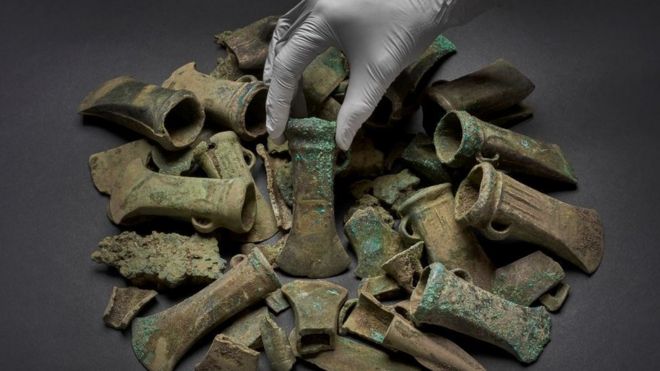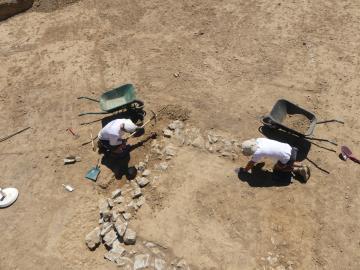Archaeologists of the INRAP (the French National Institute for Preventive Archaeological Research) search an ancient necropolis site in Narbonne, southern France, on October 7, 2019. The necropolis site is exceptional for its size - 5.000 m2 -, its state of conservation and the amount of treasures depicting the funeral rites at the time of Narbo Martius, the first Roman colony in Gaul, founded in 118 years before Christ. ERIC CABANIS / AFP.
At the gates of Narbonne, an Antique necropolis is currently under excavation by an Inrap team, as prescribed by the State (Drac Occitanie), prior to the construction of a Zac. Due to its importance and its exceptional state of preservation, this site is a major discovery for French archaeology and benefits from significant funding from the government (State, Occitanie region, Aude department, Grand Narbonne agglomeration, city of Narbonne) and the project developer (Alenis, Grand Narbonne development company). The archaeological site adjoins Narbo Via, an international Antiquity museum designed by « Foster+Partners » who, in 2020, will present the exceptional heritage of Antique Narbonne in an 8,000 m2 space.
Read the rest of this article...




































